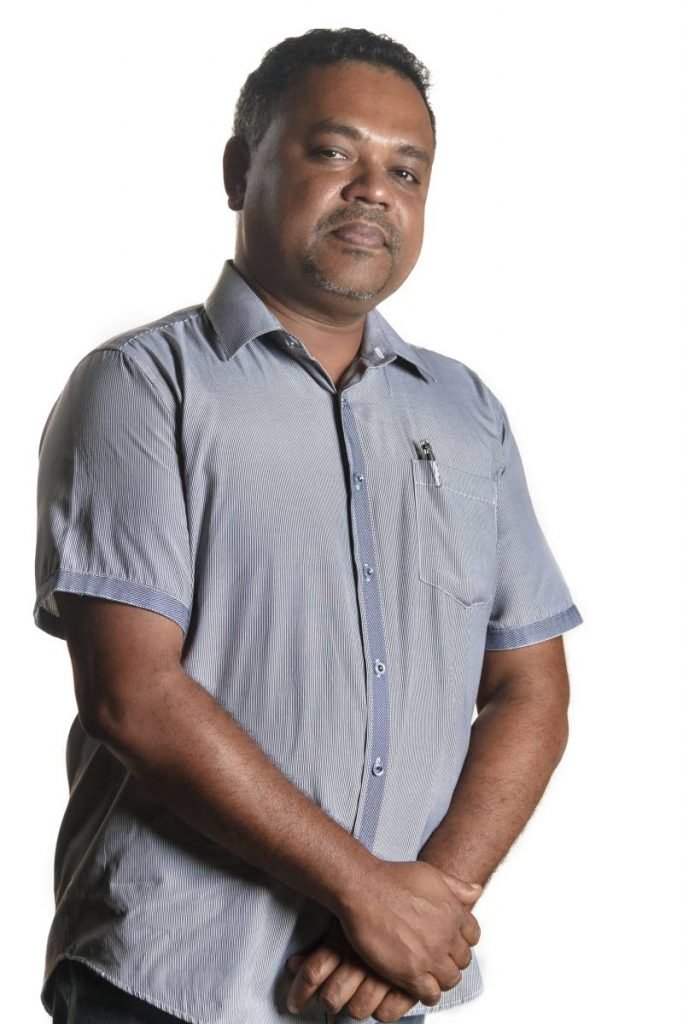Manoj Christopher - Keeps the press rolling

Manoj Christopher has given 25 years of service to Newsday, directly and indirectly, in one of the most crucial roles involved in the newspaper's daily and timely publication.
As Christopher explained, he likes his job – but it's not one he would particularly recommend to the faint-hearted.
Christopher is the manager of Newsday's El Socorro printery and has been since the company bought new machinery and began doing its own printing in 2002. Before the El Socorro plant was opened, Newsday had been printed by the TnT Mirror since 1993, when the company was established.
When he was hired by Newsday in 2002, as part of an agreement, Christopher was recognised as having nine years of service to his new employer, thanks to his familiarity with Newsday's operations. This was similarly the case with several other workers who were brought in and their indirect contributions to Newsday acknowledged.
Christopher is an electrician by trade and his first job as a contracted technician was the stepping-stone to his career as a printery manager. He began working at a company contracted by the TnT Mirror to service its machines and was later hired by the Mirror and promoted to plant manager.
Now the 51-year-old is the person responsible for the mechanical and electrical maintenance of Newsday’s print equipment, a job he juggles with his other functions as the manager of dozens of employees: pressmen, pressroom assistants, supervisors, inserters, and others.
Christopher says the former is by far the more taxing aspect of his job. Managing the workers, he said, “is a breeze.”
He gave insights into the technical part of his job, dating back to 2002.
“When I started off with the new pressroom, it was very tough, because I was working some days like 11 hours and ten hours straight to make sure everything ran smoothly.
“At the new pressroom we experienced a lot of teething problems with the equipment. So when we started, we had little things breaking down, things needed tweaking and adjusting. That caused me to have to spend a lot more time on the work. It went on for about three months before things settled in.”
Newsday sent Christopher to the United States — where the machinery was bought — to observe and study the operations of large-scale printeries.
In 2004 Newsday became the first newspaper to go fully digital with multi-million-dollar CTP (computer to plate) equipment, necessary for any modern printer, and one which brought countless benefits to the overall quality of the newspaper. Additional digital and automated machines included a folder, a machine which places the various sections of the newspaper into one.
Naturally, this eased the workload of many employees.
“Where the inserting is concerned, long time we actually put all the sections together by hand and then moved all the paper from that area by hand again to the distribution area.
“Now what we do is, we insert the paper through a machine, which is conveyed to a stacker, and then conveyed back out to a distribution area. So there’s a lot of labour saved there.”
Conversely, this may have made his job trickier and even more demanding.
“New machinery can still malfunction,” he said. “My workload maybe even increased a bit more, I should say, because looking after this equipment is a lot more difficult than looking after an employee doing the work.”
Christopher has felt the anxiety of dealing with major breaking news compounded by untimely mechanical and electrical mishaps that forced delays until the early hours of the morning and even threatened the publication of the paper.
“We had a lot of instances where the paper ran late, for instance for elections. Our working hours back then used to be 10 am to 6 pm and 6 pm to 2 am. On one election night – I’ll never forget this – we had a major breakdown and we had to go straight down till 6 in the morning.” There were times when big news stories broke late and the front page had to be rebuilt.
“So we had to stop the press until they supplied us with the new plate.”
But the hardest part of his job, then and now, is keeping up with the equipment.
“It’s technical and demands a lot of attention. Most of our problems are electrical.
“And even though I’m away from work and I get a call – because I always work on call: matters, electrical, mechanical or what, if there’s a problem in the press room – they call me any time, any day. Since I know myself working, there is not one day that I didn’t respond to a call.”
Christopher takes pride in his professionalism and resilience.
“I built my reputation with how I work. The thing about it is, they trust me a lot because since I’ve been here, every day the Newsday went out."
He highlighted one aspect of his tenure he wants to be recognised for, and that is the sacrifice he has made to Newsday at the expense of time he could have spent with his family.
“I would say, I like my job. I like the challenge. But not all the time you’ll be happy. What I do, however, I enjoy.”


Comments
"Manoj Christopher – Keeps the press rolling"